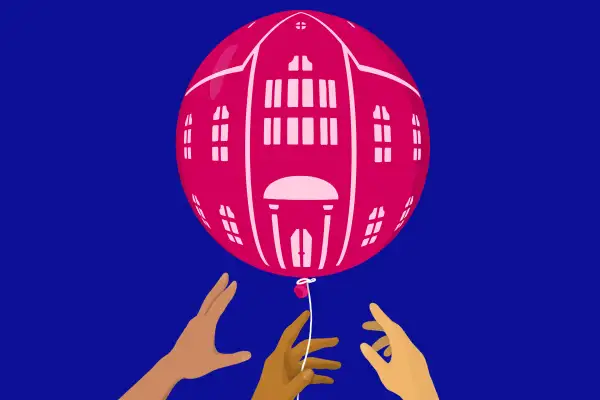Jumbo Mortgages Are in High Demand but Harder to Get Than Ever

Mortgage lenders began to tighten their purse strings when the coronavirus crisis hit the U.S. earlier this year, raising requirements for all borrowers and for those taking out large home loans in particular.
Mortgages that are too large to be purchased by Fannie Mae or Freddie Mac, the government-sponsored enterprises that buy home loans, are known as jumbo loans. Across most of the country, a mortgage larger than $510,400 is considered non-conforming and fits in the jumbo bucket, though in some expensive markets, the jumbo loan limit is as high as $765,600.
Nationwide, jumbo loan availability has plummeted 57% since February, the Mortgage Bankers Association reported in June. Credit supply overall has fallen 30%.
“Lenders feared home values would drop dramatically when the pandemic started, so they pulled back on offering large mortgages,” says Charles Nilsen, head of residential lending at private banking firm Boston Private. “The jumbo market essentially dried up overnight.”
Why are jumbo loans back in demand?
At first, low availability may not have been a problem for most jumbo borrowers, as they waited to see what happened with the stock market and wider economy. Now, with the S&P 500 back to pre-COVID levels and mortgage rates at lows once thought impossible, the demand for jumbo loans is rising. “Our phones are ringing off the hook for jumbos,” Nilsen says.
“Home buyers are feeling more optimistic, which means more people are willing to take out large mortgages,” says Kathryn Jennings, a loan officer at Alpha Mortgage in Carolina Beach, N.C.
Despite initial fears, home values have remained relatively stable since the start of the pandemic. “Inventory contracted relative to demand, so home prices didn’t take a hit,” says Nilsen. In fact, low supply has pushed home prices higher in many places—according to Realtor.com’s monthly housing market trends report, the national median listing price in June was $342,000, up 5.1%year-over-year. As home prices rise, more loans will fall into the jumbo category.
What are current jumbo mortgage rates?
Another reason demand is rising for jumbo loans is because mortgage rates have dropped to all-time lows. For the week ending July 16, the average interest rate for a 30-year fixed-rate mortgage set a record low of 2.98% with 0.7 points paid, according to Freddie Mac. Lately, however, jumbo mortgage rates have been higher than rates for conventional loans. (Pre-pandemic, jumbo rates were lower.) The average rate for a 30-year fixed-rate jumbo was 3.295% as of July 14, compared to 3.009% for conforming loans, according to Optimal Blue, a mortgage technology and analytics company.
How hard is it to get a jumbo mortgage right now?
Like buyers, lenders got skittish when the pandemic rocked the U.S. economy in March and April—leading many to scale back on how many jumbo loans they were issuing, while some stopped offering them altogether.
“The only choice for most lenders was to put jumbo loans on their own portfolios,” because private investors weren’t biting, says Mike Fratantoni, the MBA’s chief economist. “A lot of lenders weren’t willing to take on that risk.”Massive Wells Fargo, for instance, stopped buying jumbo loans from other loan originators in early April.
Lenders also shied away from jumbo loans because jumbo mortgages can’t be purchased or secured by the government-backed Fannie Mae or Freddie Mac. That means jumbo loans also don't qualify for government forbearance under the Coronavirus Aid, Relief and Economic Security, or CARES, Act, passed in March, meaning fewer investors in the secondary market were interested in buying them.
Some of those fears are still lingering, Fratantoni says, but as the economy begins to improve more lenders and secondary investors are diving back into jumbo mortgages. The catch for borrowers? Lenders have tightened the requirements that buyers must meet to qualify.
Here’s what you need to get approved for a jumbo loan in today’s market.
Credit score. Before the coronavirus pandemic, buyers typically needed to have a credit score of 680 or higher to qualify for a jumbo loan, according to Nilsen, who says jumbo borrowers now need 700 or 720 credit scores. To qualify for the best mortgage rates on a jumbo loan though, you’ll need a credit score of 760 or above, says Michael Murgatroy, vice president of mortgage lending at Guaranteed Rate’s Florida branch.
In comparison, conventional loans typically require a minimum credit score of 650. The higher score for jumbo loans is because when you're borrowing more money, lenders want greater reassurance that you're financially responsible.
Down payment. Jumbo loans normally require at least a 20% down payment, but some lenders are currently asking for 25%, since borrowers who make larger down payments are less likely to default. Furthermore, Nilsen says the down payment required for a “super jumbo”—a mortgage of $2 million or higher—can bump up to 30%. The upshot: Making a larger down payment can help you qualify for a lower mortgage rate.
Debt-to-income. Your debt-to-income ratio, or DTI, is your total minimum monthly debt divided by your gross monthly income. While the maximum DTI for a conforming loan is typically 45%—and hasn’t changed during the pandemic—the maximum in the jumbo range can be as low 35% in today’s market, Jennings says.
Cash reserves. Lenders want reassurance that you have cash available to make your mortgage payments in the event of a financial emergency, such as a layoff. For conforming loans, cash reserve requirements may be as little as one month's housing expenses. But jumbo lenders often require borrowers to have two months’ reserves or even three months’ worth of reserves amid COVID-19.
More from Money:
With Mortgage Rates So Low, Getting a Floating Rate Mortgage Might Seem Crazy. Here's Why I Did It Anyway
Mortgage Rates Are at Record Lows. But What Does It Take to Actually Qualify for a 3% Loan?
